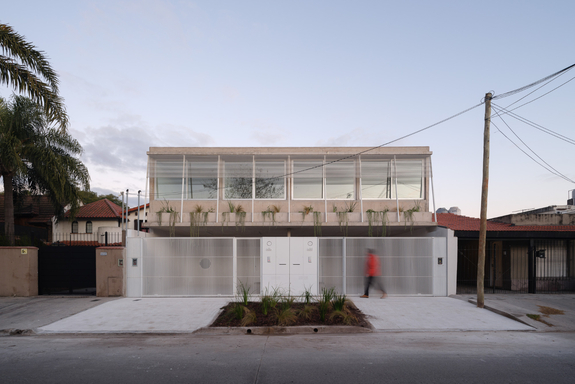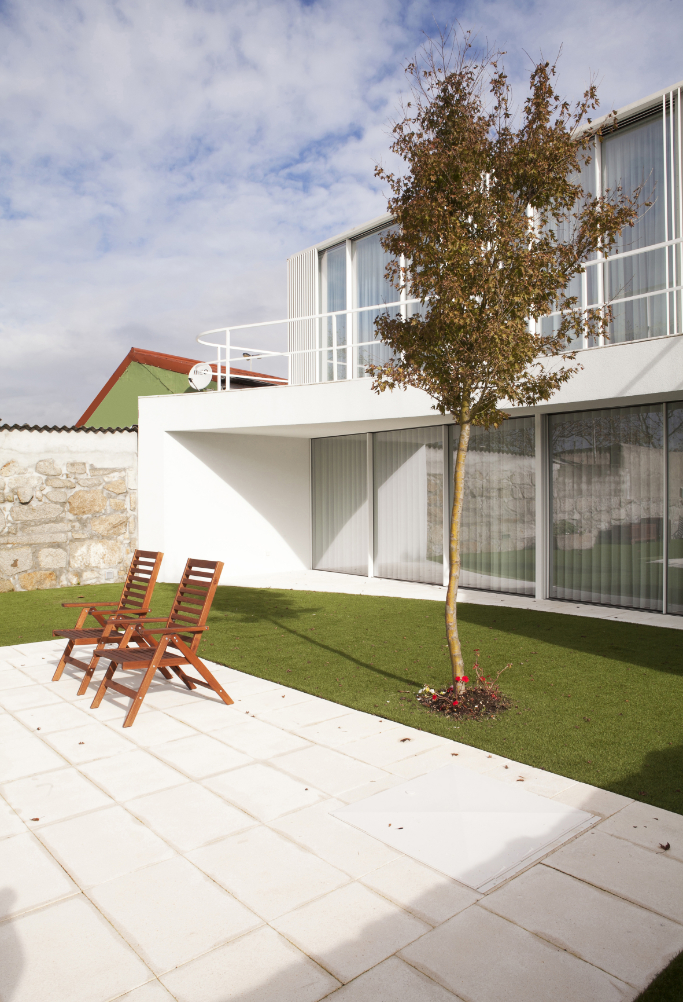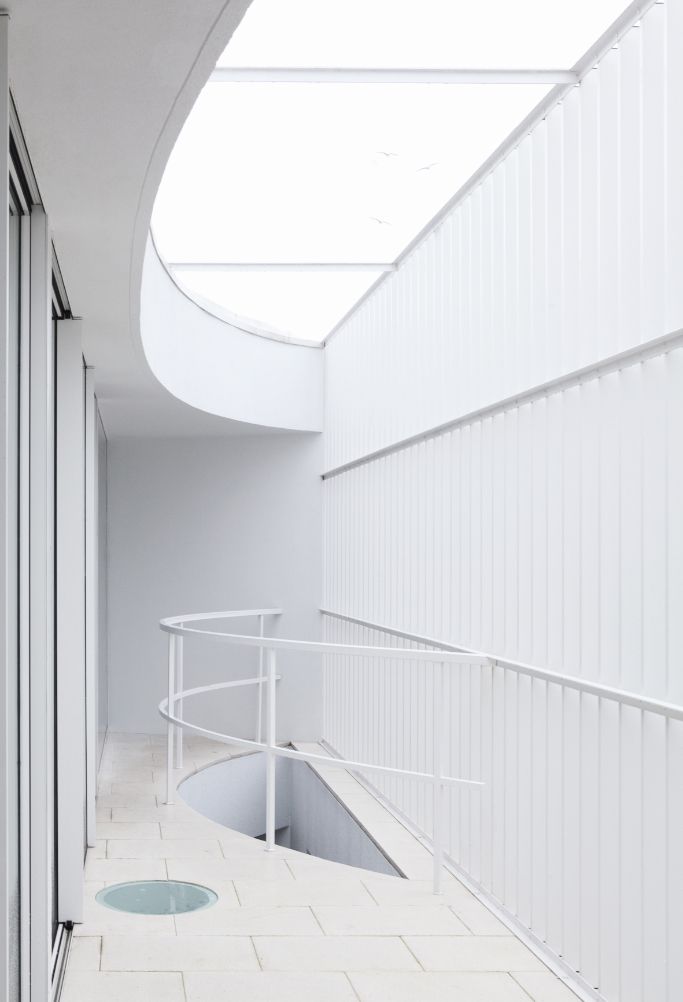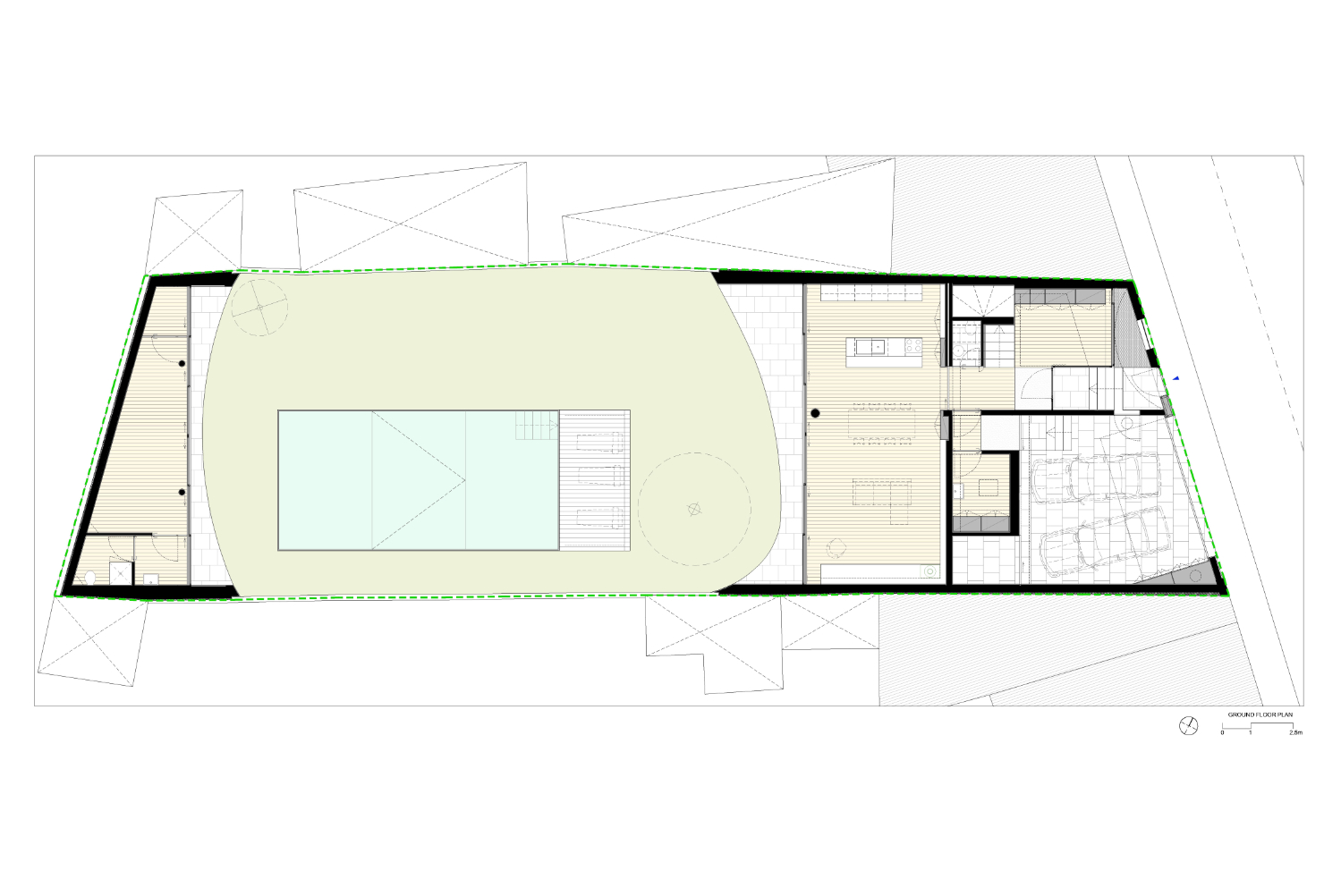Filter
0 %
rates

The architectural project for this house was born simultaneously from a void and from a dance: the unbuilt space of the patio separates and unites the two volumes that make up the intervention and that seem to want to communicate through a dance.
The house sought to create a relationship of dialogue, not only with the urban front in which it operates, but also with the immediate surroundings. Taking into account that this is an area in a process of constructive and use transformation, the basic premise was to design the building in relation to the pre-existing buildings, but also, and above all, to endow it with characteristics that would allow it to dialogue in the future with new neighboring constructions, something that was confirmed, since new contiguous buildings appeared in the meantime.
It was decided to integrate pieces of the original facade into the new facade, as if fixing fragments of history. The new facade seeks a sharp separation of the two floors that make up the new intervention: the lower part, which preserves parts of the pre-existing facade, is purposely fragmented and the surfaces have different depths, thus relating to the rhythm of the pre-existing neighboring buildings facades; the upper floor is clearly autonomous, both in terms of proportion and in terms of language. Here appears a surface of vertical slats that delimit the public façade of the house, creating a visual filter between the public space and the private space. In the future, this slat will serve as a support for a vertical garden, which will accentuate the visual filter and will also function as a filter for dust and smells from the constant traffic that is observed in the adjacent street.
Throughout the process, curves spontaneously emerged and helped to resolve the design: first, on the back facade, the canopy saw the need to contour an existing tree that was intended to be maintained; with this rounded shape, the canopy allows shading of the façade, creates a useful outdoor covered area, in the extension of the living room and kitchen, and a balcony on the upper floor, at the same time that it seems to embrace the tree; due to the requirement of a formal and aesthetic relationship with the annex, the same type of design was proposed for its roof, thus communicating the main building and its dependence in a coherent and integrated way (the dance); other curved elements also appear on the slab of the front patio, where an opening is created over the pedestrian entrance on the ground floor, thus enabling the creation of a semi-covered patio at the entrance to the house.
As with the front facade, but for different reasons, the upper part of the rear facade was clad with a set of vertical slats, which, unlike the first ones, with a static and closed appearance, have a dynamic appearance, allowing the opening of the glazed spans over the private backyard.
Credits
Casa Da Vilarinha
Place: Porto, Portugal
Studio: A2OFFICE
Author: Alberto Dias Ribeiro
Collaboration: Alexandra Marques, Angelina Voulgari, Bernardo Faria, Débora Nojiri, Mariana Gonçalves
Construction: 2016 — 2022
Gross flor area: 296 m2
Contractor: AZU
Photo: AL.MA Fotografia / Alexandra Marqes


































.jpg)